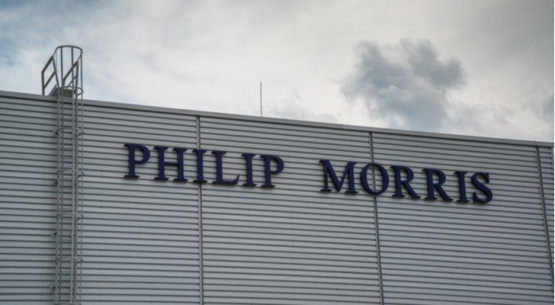The Current Philip Morris Stock Dividend Isn’t Sustainable

As Kraft Heinz (NYSE:KHC) investors know all too well, a high dividend yield is only as good as the underlying stock that pays it. With a yield of 5.2%, Philip Morris (NYSE:PM) stock has one of the biggest dividends in the S&P 500. However, a look under the hood suggests that dividend from Philip Morris stock may not be reliable in the long-term.
Source: Shutterstock A quick look at the PM stock chart reveals that a yield above 5% is on the high end of the stock’s historical yield. One of the reasons for that high yield is that PM stock is down 18% in the past year.
This is not the ideal route to a high yield for any shareholder. Investors want to see yields on the rise due to payout hikes, not falling share prices. Given PM’s historical yield of between 3.2% and 5.0%, management may have never intended to have a dividend yield this high.
- 7 Top Stocks to Buy From Goldman Sachs' Secret Portfolio
Philip Morris Stock Fundamentals
There’s no guaranteed way to determine when a company is at risk of a dividend cut, but there are a handful of red flags to watch. First, it’s good to take a glance at the stock’s fundamentals.
InvestorPlace - Stock Market News, Stock Advice & Trading Tips
Fortunately, Philip Morris stock fundamentals aren’t terribly bad. A forward PE ratio of 14.9 is on the low side, and a price-to-sales ratio of 4.6 is reasonable. However, PEG ratio, which factors in growth, is 2.5. A PEG above 2 is less than ideal. In addition, Philip Morris had $31.7 billion in debt as of the end of 2018. The stock’s debt-to-equity ratio is up 33% in the past five years.
In the most recent quarter, Philip Morris increased net income by 175% and tripled net profit margins from a year ago. Unfortunately, revenue was down 9.5%. A longer-term look at the company’s growth numbers highlights how the company is fighting a difficult environment.
In the past five years, the company’s trailing 12-month net income, profit margin and revenue are all down between 2 and 5% overall.
Payout Ratio
Given PM stock fundamentals are mixed, the million dollar question is can Philip Morris afford its dividend? For now, the answer is yes. However, the stock’s payout ratio is cause for concern.
The payout ratio is a stock’s dividend payout divided by its earnings per share. The ratio is a rough estimate of how much of a company’s profits are devoted to paying dividends.
Ideally, I like to see even high-yielding stocks keep their payout ratios below 50%, but the lower the better.
Unfortunately, PM’s payout ratio has crept up to 88.3%. That ratio means that Philip Morris is paying out nearly 90 cents out of every dollar of profits to support its dividend. That’s cash flow that isn’t going to developing new products or growing the business.
The Future
It’s easy to forgive some near-term red flags if a company has a long-term growth story worth believing. For Philip Morris and the rest of the tobacco industry, long-term growth will likely remain an uphill battle.
Regulatory smoking bans, crackdowns on advertising, increasing competition and a general negative consumer sentiment toward cigarettes are all obstacles that Philip Morris must overcome.
The company is marketing its IQOS “heat not burn†tobacco product as an alternative to cigarettes. However, it hasn’t made an aggressive push into e-vapor products or cannabis, two potential long-term lifelines for the tobacco industry.
Former Philip Morris parent company Altria (NYSE:MO) has made large investments in cannabis company Cronos Group (NASDAQ: CRON) and vaping leader Juul. In a cigarette industry under intense pressure, Philip Morris may need to join Altria in looking for potential escape routes. But those investments won’t come cheap for Philip Morris, especially when 90% of its profits are committed to its dividend.
The Bottom Line on Philip Morris Stock
With revenue and income growth challenged, Philip Morris is in a difficult situation. The company needs to invest aggressively in its business. Unfortunately, the difficult environment may force management to take on even more debt to do so given its dividend obligations.
For now, Philip Morris can afford to keep paying out $6.9 billion in dividends annually. But perhaps the better question is how long can the company continue to do so and at what cost?
As of this writing, Wayne Duggan did not hold a position in any of the aforementioned securities.
More From InvestorPlace
- 2 Toxic Pot Stocks You Should Avoid
- 7 Growth Stocks Racing to All-Time Highs
- 5 Warren Buffett Stocks You Can't Go Wrong With
- Game On for These 3 Gaming Stocks
Compare Brokers
The post The Current Philip Morris Stock Dividend Isn’t Sustainable appeared first on InvestorPlace.